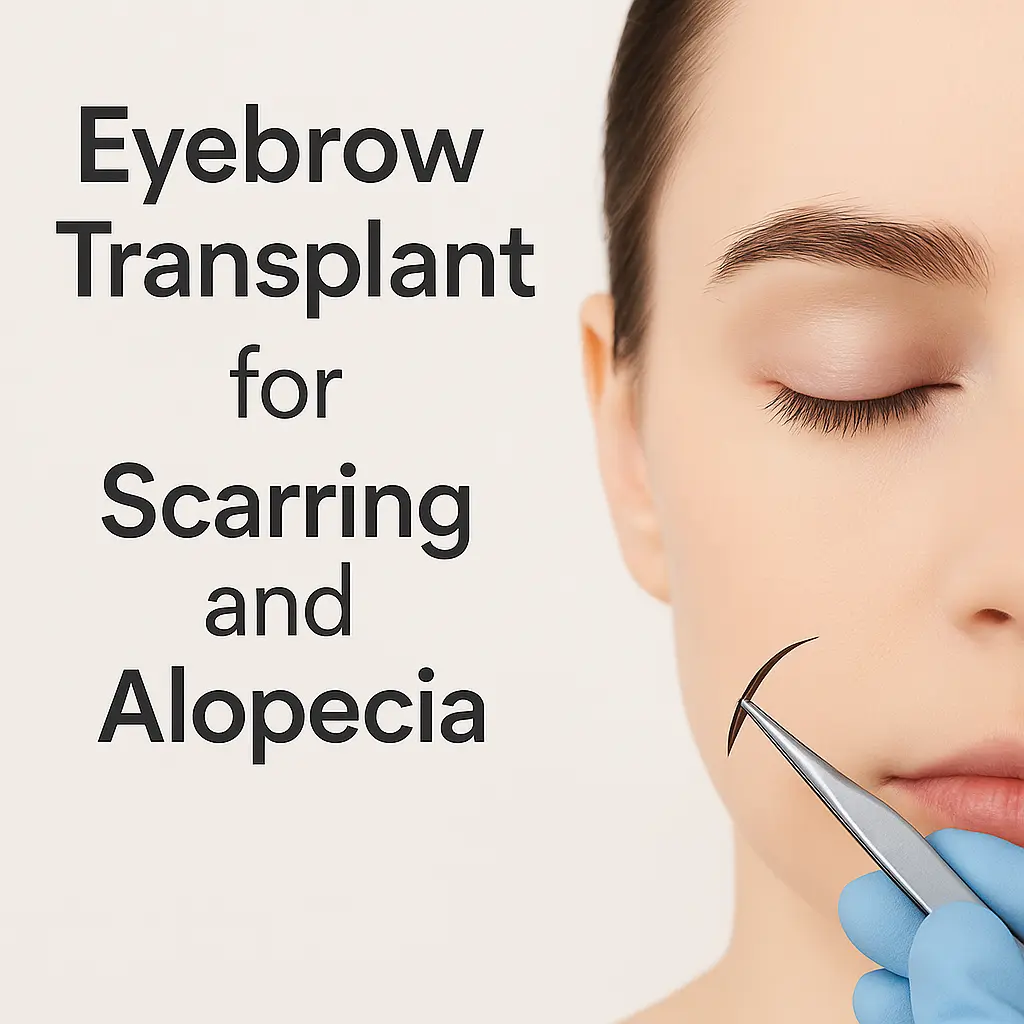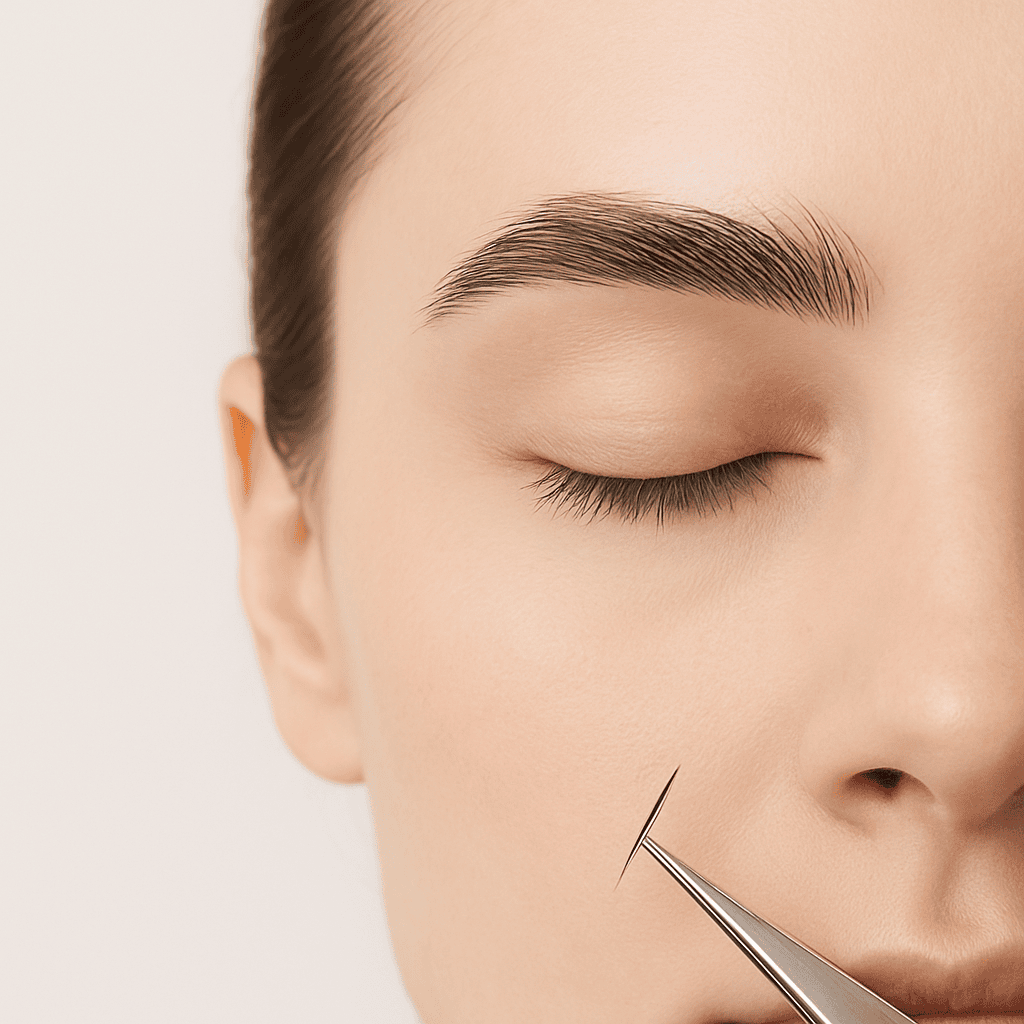
Loss of eyebrow hair due to scarring or alopecia can significantly impact one’s facial harmony and self-confidence. Whether caused by trauma, surgery, burns, or conditions like alopecia areata, eyebrow thinning or complete loss is no longer irreversible. Thanks to advances in eyebrow transplant techniques, individuals affected by scar tissue or autoimmune hair loss now have access to a natural-looking, permanent eyebrow solution. In this article, we’ll explore how an eyebrow transplant works for scarring and alopecia, who qualifies as a candidate, and what kind of results you can expect from this transformative procedure.
Alopecia is a general term used to describe hair loss, which can occur on the scalp, eyebrows, eyelashes, and other areas of the body. It is often the result of autoimmune conditions, genetic factors, hormonal imbalances, or physical trauma. In some cases, it leads to eyebrow hair loss, making treatments like eyebrow transplant for alopecia a viable solution for restoring natural appearance.
There are several types of alopecia, including:
Understanding the specific type of alopecia is crucial in selecting the most appropriate eyebrow restoration method, such as hair transplant for eyebrow loss.
Scarring in the eyebrow area can lead to permanent eyebrow hair loss, as the underlying hair follicles are often damaged or destroyed. These scars may form due to various reasons, and in many cases, eyebrow transplant for scarring becomes the only viable solution for natural-looking eyebrow restoration.
Common causes of scar formation in the eyebrows include:
In cases where the skin remains healthy enough, a hair transplant for eyebrow scars can restore lost volume and symmetry in the brows, offering a long-lasting and aesthetically pleasing solution.
Eyebrows play a crucial role in facial expressions, identity, and communication. For many individuals, especially those affected by alopecia or scarring, the loss of eyebrows can lead to a range of psychological effects, impacting both self-esteem and social interactions.
Some of the most common emotional impacts include:
Fortunately, options like eyebrow transplant for alopecia and scarring provide not only physical improvement but also significant psychological relief. Restoring natural-looking eyebrows often leads to increased self-confidence and a more positive self-image.

An eyebrow transplant for scarring or alopecia is a specialized procedure designed to restore natural-looking eyebrows in areas affected by hair loss, trauma, or autoimmune disorders. The process typically involves extracting healthy hair follicles—usually from the back of the scalp—using techniques such as FUE (Follicular Unit Extraction) or DHI (Direct Hair Implantation).
Here’s how the procedure works:
This method is effective even on scarred skin, as long as there is sufficient blood flow to support follicle growth. It offers a permanent eyebrow restoration solution for those struggling with alopecia areata, scarring alopecia, or trauma-induced brow loss.
For individuals experiencing eyebrow hair loss due to scarring or alopecia, undergoing an eyebrow transplant offers both aesthetic and emotional advantages. Unlike temporary makeup solutions, eyebrow transplantation provides a long-term, natural-looking solution that restores not just appearance, but confidence as well.
Here are the key benefits:
Thanks to advanced techniques like FUE and DHI, eyebrow transplant is now a reliable and minimally invasive option for patients seeking to regain their brows after trauma, surgery, or autoimmune conditions.
While eyebrow transplant is a highly effective option for restoring natural-looking eyebrows in cases of alopecia or scarring, not every patient is an immediate candidate. Several factors must be assessed by a specialist before determining suitability for the procedure.
Here are key criteria for candidacy:
Patients with active inflammation, progressive scarring alopecia, or poor vascularization in the brow area may not be ideal candidates. In such cases, alternative treatments or further dermatological support may be needed before eyebrow restoration is possible.
Proper aftercare is essential to ensure the success of an eyebrow transplant, especially in patients with scarring or alopecia. Following your doctor’s instructions can help speed up healing, improve follicle survival, and lead to better, natural-looking eyebrow results.
Here are key aftercare and recovery tips:
Adhering to these steps is especially important for those with scar tissue or autoimmune-related eyebrow hair loss, as proper care supports graft retention and long-term eyebrow restoration.
For individuals facing eyebrow hair loss due to alopecia or scarring, an eyebrow transplant offers more than just a cosmetic enhancement—it provides a long-term, life-changing solution. Thanks to advanced techniques like FUE and DHI, patients can enjoy natural-looking, permanent eyebrows that restore symmetry, facial expression, and most importantly, confidence. Whether caused by trauma, autoimmune conditions, or past procedures, eyebrow transplant is a safe and effective option for those seeking lasting eyebrow restoration.
To learn more about eyebrow transplant options tailored to scarring or alopecia, feel free to contact Esteworld’s expert medical consultants and take the first step toward restoring your natural look with confidence.
Yes, individuals with certain types of alopecia, such as alopecia areata in remission or scarring alopecia with stable skin, can undergo an eyebrow transplant. The suitability depends on the condition’s activity and the presence of a healthy donor area. If managed properly, eyebrow transplant for alopecia can result in natural-looking, permanent eyebrows.
Scarring alopecia (cicatricial alopecia) can be treated with hair or eyebrow transplant if the affected area has sufficient blood supply and the disease is no longer active. Though more challenging than typical cases, successful grafting into scar tissue is possible with advanced techniques like FUE or DHI.
People with active autoimmune disorders, progressive scarring alopecia, severe vascular issues in the eyebrow area, or insufficient donor hair follicles may not be ideal candidates for eyebrow transplant. A thorough evaluation by a medical specialist is crucial to determine eligibility.
In cases of alopecia areata, eyebrow hair can sometimes regrow naturally during remission. However, if hair loss becomes chronic or scarring occurs, natural regrowth is unlikely. In such cases, an eyebrow transplant for alopecia can help restore lost brows permanently.
Yes, scarring alopecia can affect the eyebrow area by destroying the hair follicles and replacing them with scar tissue, leading to permanent eyebrow hair loss. Early diagnosis and treatment are key to preventing further damage. Eyebrow transplant on scar tissue is a potential solution if the condition stabilizes.
While there’s no universal cure for alopecia areata, many women have managed to control or reverse the condition through immunotherapy, PRP, corticosteroids, stress management, and a healthy lifestyle. For lasting cosmetic results, especially for eyebrow hair loss, some turn to eyebrow transplant for alopecia as a permanent restoration option
As Esteworld Health Group, Turkey’s leading provider of plastic and aesthetic surgery services, we have been offering aesthetic services at the highest medical standards since 1994 under the slogan “Healthy beauty!”













By Metrobus:
You can get off the Metrobus at Uzunçayır station and then take the minibuses and buses to Metropol Shopping Mall.
Bus Transportation:
You can take buses numbered 8K-10-10A-10EK-13-13ŞB-13AB-14ŞB-16M-19EK-19M-KM46-256 and get off at Ataşehir Plazalar stop.
Transportation by minibus:
You can take Üsküdar-Ferhat Paşa, Üsküdar-Ataşehir, Ümraniye-Ataşehir minibuses and get off at Ataşehir Plazalar stop.
By Metro
You can use the M4 Kadıköy-Sabiha Gökçen metro line and get off at Yenisahra or Kozyatağı stops and then take buses and minibuses to Metropol AVM.
Transportation from Sabiha Gökçen Airport:
You can take the M4 Kadıköy-Sabiha Gökçen metro line and get off at the Kozyatağı stop and then take the minibuses and buses to Ataşehir Metropol AVM.